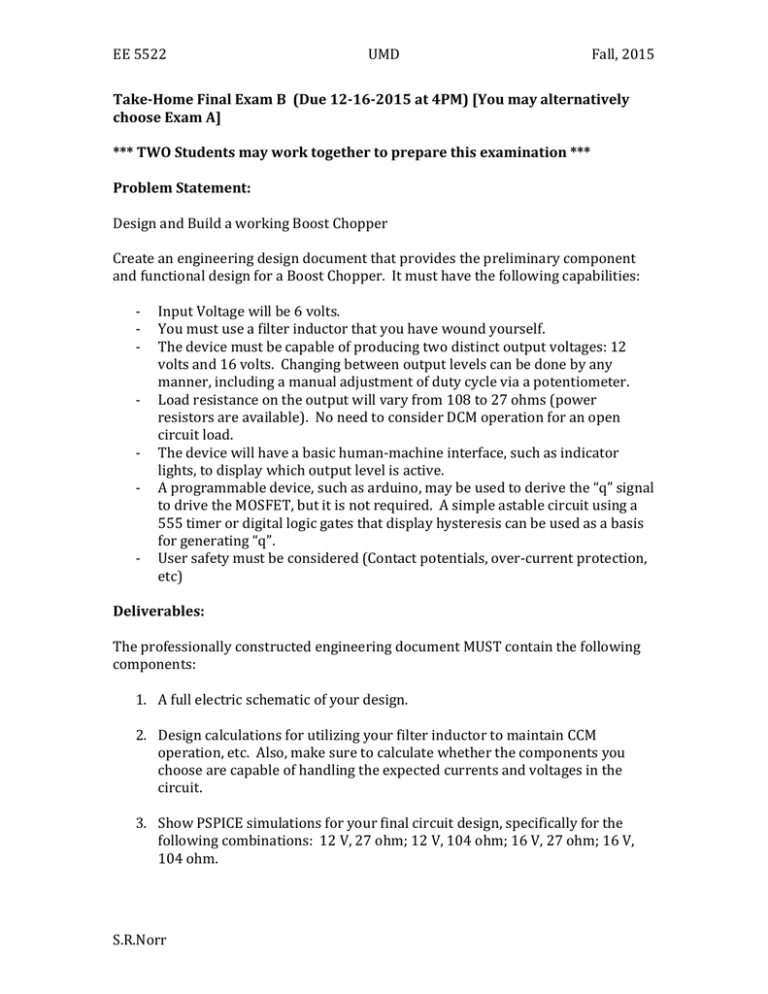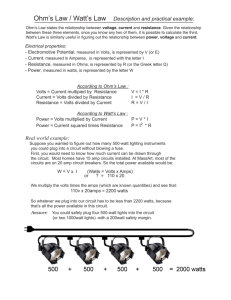Take-Home Exam B
advertisement

EE 5522 UMD Fall, 2015 Take-Home Final Exam B (Due 12-16-2015 at 4PM) [You may alternatively choose Exam A] *** TWO Students may work together to prepare this examination *** Problem Statement: Design and Build a working Boost Chopper Create an engineering design document that provides the preliminary component and functional design for a Boost Chopper. It must have the following capabilities: - - Input Voltage will be 6 volts. You must use a filter inductor that you have wound yourself. The device must be capable of producing two distinct output voltages: 12 volts and 16 volts. Changing between output levels can be done by any manner, including a manual adjustment of duty cycle via a potentiometer. Load resistance on the output will vary from 108 to 27 ohms (power resistors are available). No need to consider DCM operation for an open circuit load. The device will have a basic human-machine interface, such as indicator lights, to display which output level is active. A programmable device, such as arduino, may be used to derive the “q” signal to drive the MOSFET, but it is not required. A simple astable circuit using a 555 timer or digital logic gates that display hysteresis can be used as a basis for generating “q”. User safety must be considered (Contact potentials, over-current protection, etc) Deliverables: The professionally constructed engineering document MUST contain the following components: 1. A full electric schematic of your design. 2. Design calculations for utilizing your filter inductor to maintain CCM operation, etc. Also, make sure to calculate whether the components you choose are capable of handling the expected currents and voltages in the circuit. 3. Show PSPICE simulations for your final circuit design, specifically for the following combinations: 12 V, 27 ohm; 12 V, 104 ohm; 16 V, 27 ohm; 16 V, 104 ohm. S.R.Norr EE 5522 UMD Fall, 2015 4. Include 2 photographs of your actual hardware circuit during operation at 12 volts and 16 volts. There should be a clear indication (LED lights or other indicator) on the circuit that distinguishes the two conditions. 5. Provide oscilloscope traces for your hwardware in operation at the four conditions: 12 V, 27 ohm; 12 V, 104 ohm; 16 V, 27 ohm; 16 V, 104 ohm. 6. Attach a Bill of Materials (BOM) listing the components and retail prices, summed to a total material cost. S.R.Norr







